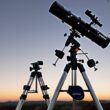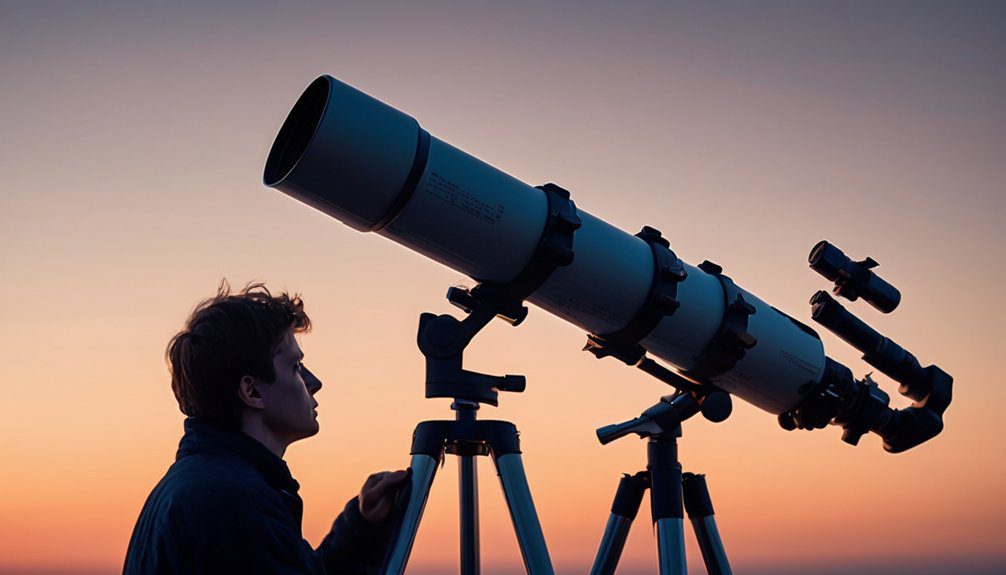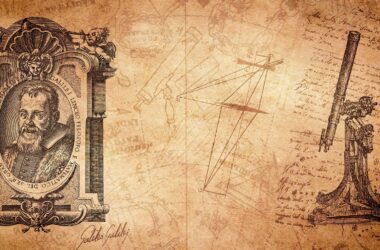To use a telescope as a beginner, first select one with a suitable aperture and an easy-to-handle altazimuth mount. Assemble the tripod and mount securely, then attach the optical tube and align the finderscope. Insert a low-power eyepiece to start. Use star charts or apps to identify constellations, then slowly adjust the telescope to focus on objects. Choose a dark location and allow your eyes to adapt. Following careful setup and location steps will improve your ability to explore the night sky in detail.
Choosing the Right Telescope for Beginners
When choosing the right telescope for beginners, you should consider several key factors that affect both usability and performance.
First, evaluate the telescope’s aperture size, as larger apertures gather more light and reveal clearer details.
Next, consider portability; a lightweight, compact model allows you to explore freely without hassle.
Also, check the mount type—altazimuth mounts are easier for beginners to handle than equatorial ones.
Finally, ascertain the telescope offers good optics and simple controls to avoid frustration.
Balancing these aspects helps you select a telescope that matches your desire for freedom and straightforward stargazing experiences.
Setting Up Your Telescope Step by Step
After selecting a telescope that suits your needs, the next step is to set it up correctly to guarantee peak performance.
Begin by assembling the tripod, ensuring all legs are stable and locked. Attach the mount securely, then connect the optical tube to the mount, tightening screws to prevent movement.
Insert the finderscope and align it with the main telescope. Next, install the eyepiece, starting with a low-power lens.
Finally, balance the telescope carefully to allow smooth movement. Follow the included manual for model-specific adjustments, and check all connections before use to maintain stability and accuracy during observation.
How to Locate and Identify Celestial Objects
How can you efficiently locate and identify celestial objects in the night sky?
Start by familiarizing yourself with star charts or astronomy apps that display current sky maps. Identify prominent constellations first; they act as reference points for finding specific stars, planets, or deep-sky objects.
Use your telescope’s finderscope to align with these landmarks before looking through the main eyepiece. Adjust the telescope slowly while observing the chart or app to confirm the object’s position.
Practice regularly during clear nights to improve your skills in traversing the sky independently and confidently. This methodical approach guarantees precise and rewarding observations.
Tips for Enhancing Your Stargazing Experience
Although stargazing can be rewarding on its own, applying certain techniques can greatly improve your viewing experience.
Here are three tips to enhance your sessions:
- Choose a dark location away from city lights to reduce light pollution and increase object visibility.
- Allow your eyes to adjust to the darkness for at least 20 minutes to improve night vision.
- Use a star chart or a stargazing app to plan your observations and identify celestial bodies accurately.
Frequently Asked Questions
How Do I Clean and Maintain My Telescope Lenses?
You clean your telescope lenses gently with a soft brush or air blower, then use lens cleaning solution and a microfiber cloth. Store your telescope covered to avoid dust and moisture, keeping your freedom to explore the stars worry-free.
Can I Use a Smartphone With My Telescope?
Yes, you can use your smartphone with your telescope by attaching it to the eyepiece using an adapter. This lets you capture amazing photos and videos of celestial objects, giving you more freedom to explore and share your discoveries.
What Accessories Are Essential for Beginner Astronomers?
You’ll want a sturdy tripod, extra eyepieces for varied magnification, a red flashlight to preserve night vision, a star chart or app, and a comfortable chair. These’ll help you explore the universe freely and comfortably.
How Do Weather Conditions Affect Telescope Use?
You’ll want clear, calm skies—clouds block your view, and wind shakes your telescope. Humidity can fog lenses, while extreme cold affects mechanics. So, pick nights with stable, dry weather for the best stargazing freedom.
Are There Any Safety Precautions When Using a Telescope?
Yes, never look at the sun directly through your telescope—it can cause permanent eye damage. Always set up your telescope on stable ground and avoid using it in stormy weather to keep yourself and your gear safe.






